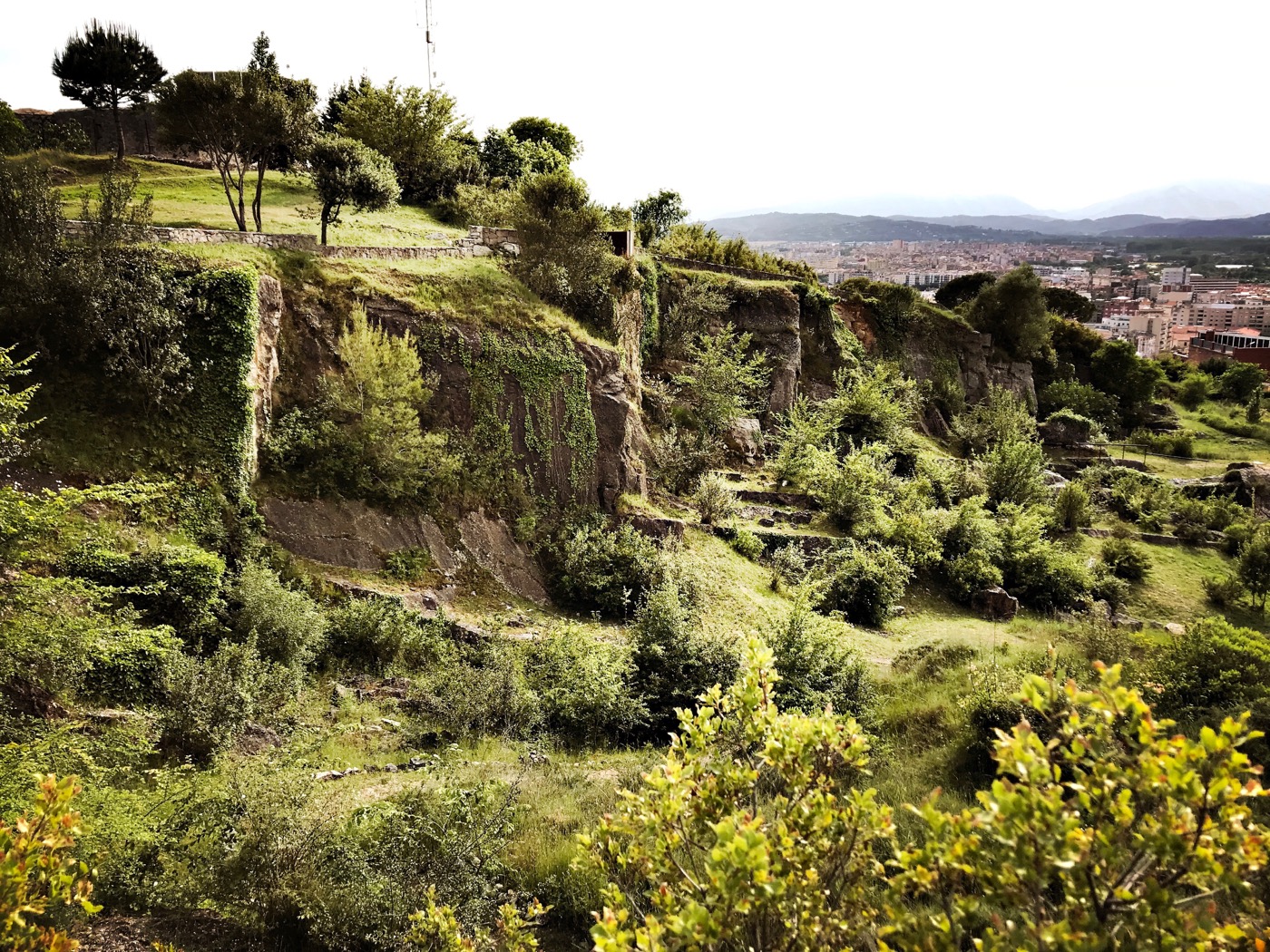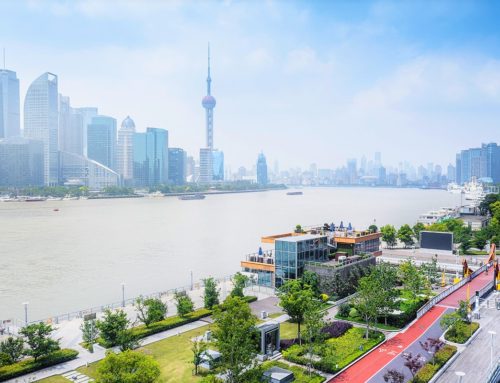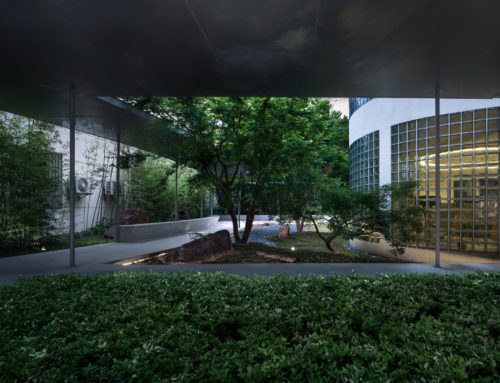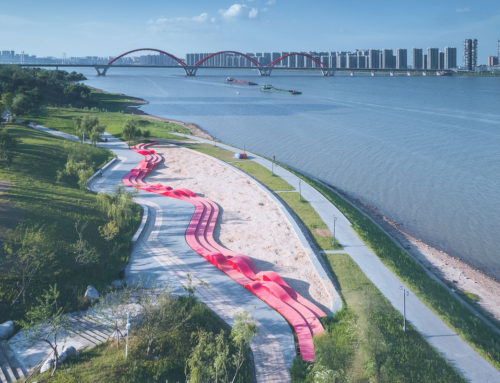非常感谢 EMF Landscape Architecture 将以下授权ALA-Designdaily发行。
Appreciation towards EMF Landscape Architecture providing the following description:
EMF self-initiated* project Girona’s shores, is an on-going effort to reclaim, develop and manage a multifunctional green infrastructure (GI). It integrates the city’s edge nature as a strategic asset to reimagine a green-open conurbation. Its goal is to construct the largest public facility of town.
Where in an already established town, do we find ‘nature’ suitable to form an extensive green network? Richard TT Forman has no doubt: on the dynamic edge. And at what cost can it be made feasible? Insofar the functionality of GI depends on its extension and connectivity, and given the persistent precariousness of the public sector, such a green infrastructure is only feasible if it is very-low-cost to implement and manage. Only beautiful if big. Only big if cheap.
After six years of attempts, we depict what we believe could be a replicable frugal, malleable method:
• A distributed understanding of town. The concept of ‘shore’, town’s edge, in itself counteracts the usual epicentral, hierarchical nature of urban public space and spins it out to the edge, bringing it closer to each and every neighbourhood. ‘Far’ is always near ‘the shore’.
• An inverted project sequence. This large-scale infrastructural project emerged not from previous public demand or funding, but from the knowledge gained through self-commissioned small-scale, bold interventions on site: the pilot projects and their palpable results. Thus starting from the small scale, with the carrying out of low-tech, very-low-cost pilot projects, with immediate and demonstrative results, until later developing the overall vision. Thus the tools and tactics of palpable impact and the feasibility are prioritised before “the grand” metropolitan strategy. Pilot projects as ‘sketches’. As a way of testing ideas by drawing on the site itself through removing and adjusting vegetation. This created different kinds of spaces with different potentials for human occupation and ecological biodiversity.
• An interpretation of differentiated-management as a landscape design-praxis practice, which permits the immediate diversification and appropriation of the agroforestry mosaic of the naturban border. Differentiated’ management, developed by designing and drawing directly on the site and based on the design of ecological succession. The strategy is based on frugality, on recurring actions and successive observations and adjustments to management regimes. The design process for Girona is open and does not rely on a conventional process where conception and construction are separated. Rather, it is highly site-specific, intermingling design, construction, and management. It gives the design process immediacy; adjustments are made in the moment.
• Out of the on-site design-of-differentiated-management, raised a new naturban aesthetic for ‘the shore’, neither urban nor natural, which conjures upcombines a mosaic rich mosaic in biodiversity and with a designed socially rewarding appearance aspect.
• Cheap & chic. In the pilot projects that we have carried out, we estimate that the average cost of “managing” 1 m2 at a very low cost (1-2€/m2), between 50 and 400 times less than an intervention in an urban street of square.
• A drafting and implementation team is formed in which the environmental technical services and the municipal “brigade” become co-designers, executors, managers and multipliers of the project. The knowledge thus generated is virtuously recycled, rooted and replicated with the same local actors. And it self-seeds.
• Responsive upgrading through successive acting. The transversal knowledge alliance and the flexible protocol that is constantly being rewritten in relation to actual site conditions is perhaps the most resilient and successful facet of this project. Indeed, all the knowhow derived from the pilot projects is now applied and amplified by new differentiated management protocols throughout the edges of the city.
• The framework Project is a road map that outlines the Multifunctional Green Infrastructure of Girona, which includes a plan of action for the entire “shore” divided in 13 loops. An open method, with the federation of its autonomous initiatives, proposes an “opportune” route in the context of an uncertain economic and political environment.
• Finally the construct of a new city-imaginary through 11 ways to looking at the shore, introduced as a tool of for political communication and dissuasion. Departing from multiple narratives it argues for the relevance of a new green ‘eixample’ (expansion) and the emergencedevelopment of a metropolitan conurbation.
The relevance of this project rests on its response-ability to precariousness at several spatial and temporal scales. To rely on landscape-design-operatives, and beauty as a lever to empower reclaim a green infrastructure with hardly funding. And ultimately for its capacity to create and share landscape-design-knowledge among the city ‘brigades’ as disseminating agents.
Name of the project: Girona´s shores
Design laboratory for the construct of an urban low-cost Green Infrastructure
Project category (Infrastructure)
Role of the entrant in the project:
author – EMF LANDSCAPE ARCHITECTURE:
Martí Franch, Gemma Batllori, Héloise Bouju
Other designers involved in the design of landscape:
Marine Coudert, Tatiana Rojas, Caroline Holz, François Poupeau, Anna Smierzchalska, Alessandra Schmid, Meruyert Syzdykova, Mercè Pagés, Sergi Romero
Project location Girona, Catalonia
Design year: 2014 – 2020
Year Built: 2014 – 2020








评论